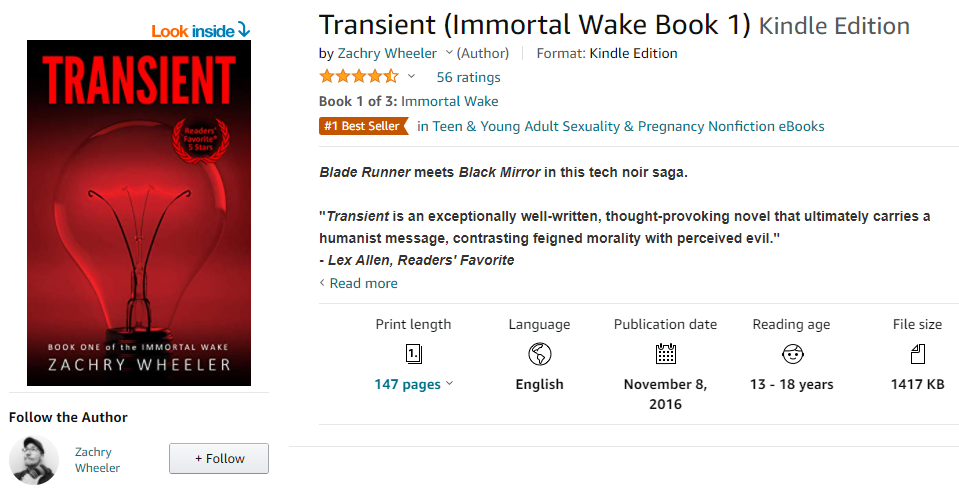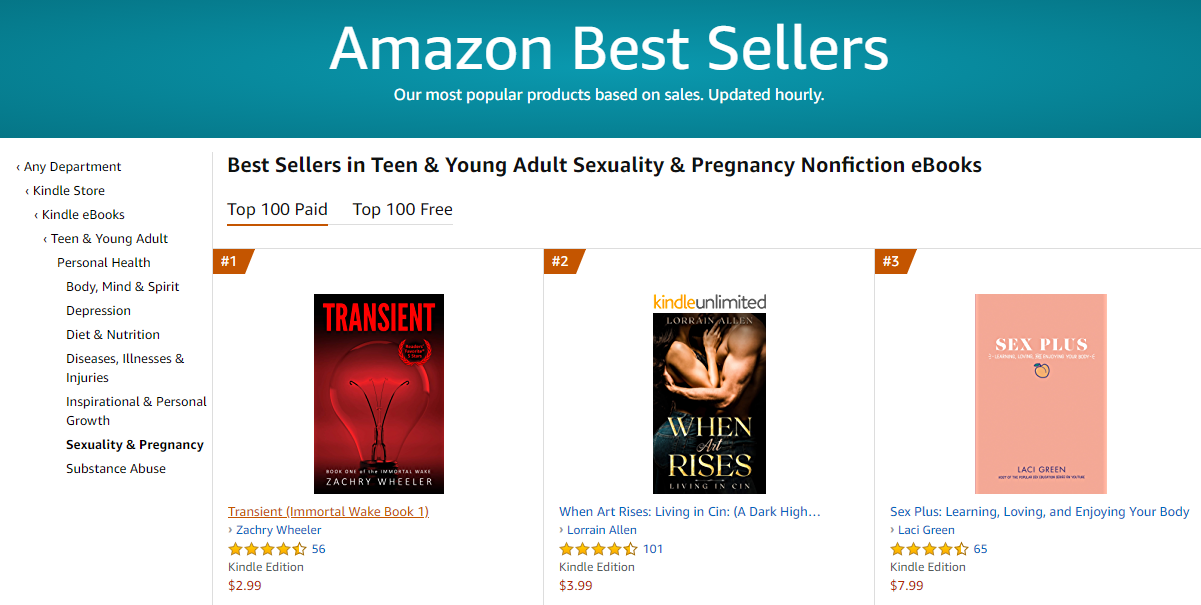Few accolades are more coveted in the writing world than “Best Seller.” It’s regarded as the pinnacle of success, the peak of the mountain, the most glorious achievement obtainable in the meta realm. (Sorry, got a little nerdy there.) However, in today’s publishing world, one big caveat has polluted its perceived value. I am speaking, of course, about Amazon. The site has trained readers to ask a very important follow-up question.
“Okay, it’s a Best Seller. But what kind of Best Seller?”
Let’s get the obvious out of the way. Unless a book dominates a primary category, being an Amazon Best Seller doesn’t mean much. It’s a far cry from being a New York Times Best Seller, which requires a savvy agent, a publishing contract, a titillating book, a rabid reader base, and some marketing magic (or a giant pile of money). Being an Amazon Best Seller just means that you understand the search algorithms.
I’m an Amazon Best Seller. Every now and then, I get treated to images like these:


Pretty cool, right? But did you notice anything … peculiar?
Transient is a tech noir novel about teenage spies set in the distant future. So what the hell is it doing in the “Teen & Young Adult Sexuality & Pregnancy Nonfiction eBooks” category?
As with everything else involving Amazon, the answer is as clear as mud. Pieces of the category are certainly correct. Teen & Young Adult? Absolutely. Sexuality & Pregnancy? Yes and yes. But nonfiction? Um, no. Mostly correct, but as a whole, not very accurate.
And it’s not like I added the book directly to that category. I can’t technically do that as an author. I say technically because I can manipulate the browse categories to some extent. Amazon allows authors to select two primary categories for both Kindle and Paperback versions. These are high-level buckets that are nigh-impossible to get noticed in, as there are hundreds of thousands of competitors vying for the same attention. However, I can also select up to 10 additional sub-categories for the Kindle version. But in order to select them, I have to contact Amazon directly through their Author Central service. And of course, Amazon does not publish a list of available categories (which number in the thousands). You have to dig through the Kindle store manually or use third-party scraping apps like Publisher Rocket.
See? Super clear. And it still doesn’t explain how I got into a “Nonfiction” category.

To answer that question, we have to talk about keywords. Every book on Amazon has seven associated keywords, which the author gets to provide. Most will enter high-level keywords and never think about them again. For example, I might enter “vampire” or “dystopian” for my Immortal Wake books. But what Amazon fails to tell you is that these keywords are used for a variety of tasks, including category validation. Amazon also neglects to mention that key-words can also be key-phrases. And the more specific they are, the more likely that the search engine will find the book. So instead of using “dystopian” as a keyword, I can use “dystopian vampire survival fiction” or something similar.
So now Amazon has my book in two primary categories, 10 sub-categories, and is further adjusted by seven wildly different keyword phrases that it can mix and match. The system takes all of that data, crams it into a complicated formula, then concludes that “category X is close enough.” It drops the book into the bucket, and then, based on a cryptic scoring system that updates every hour, maybe awards it a Best Seller rank.
Cool … I guess.
I also readily admit that this analysis is far from perfect. Nobody has an exact answer as to how the overly-complicated algorithm works. Hell, I am willing to bet that the helpful staff at Kindle Direct Publishing don’t either. At one point, my romantic spoof Sparkle Pirate got stuck in some erotica categories, which carries its own special hell of limitations. Nobody at KDP could tell me why it happened or how to fix it. The algorithm had incorrectly flagged the material as sexually explicit, which couldn’t be undone, and required elevation to the IT department to resolve, which took two full months. So yeah, it’s a convoluted mess that nobody knows how to manage.
But anyway, I’m an Amazon Best Seller. And it means absolutely nothing.
All that said, there is one very important piece of the puzzle that I neglected to mention. In order to be a Best Seller, you have to actually sell. Earlier algorithms were easy to manipulate (this article being a prime example). Amazon has since wised up and installed various ranking criteria. For example, there must be at least 100 books in a given category to earn a Best Seller banner. There are numerous other criteria, which are, of course, wholly unclear.
My own marketing strategy includes a slew of sponsored ads, which generate reliable sales that boost my rankings. However, they require constant attention because the algorithm is constantly changing. It’s an annoying chore, but necessary. Amazon is an ever-rocking boat, and authors need to maintain their balance to stay afloat.
As a parting note, I should clarify that when I say “means nothing,” I mean it in the context of marketing. Becoming a Best Seller in any regard is still an achievement. At a baseline, it means that people are buying and reading your book, and that’s pretty darn cool. But until I can drop the “Amazon” prefix, I won’t be adding “Best Seller” to my author bio.


